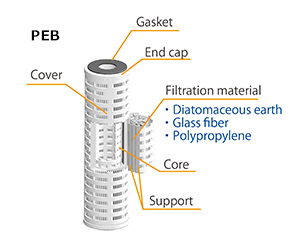

This is especially useful when gardening in pots and containers, since natural drainage and aeration methods may be absent. Bonsai Nut blog - an excellent discussion that you should find useful. The main reason to use perlite and vermiculite is that they help soil to retain both water and air.Note that there are said to be "mixed results" for bonsai) Does perlite float in water Yes, Perlite is very light and a common complaint is that it floats and/or rises to the top. Dave's Garden blog (search for "earth" relevant text is near the bottom of the page.Personlly, I would use a traditional bonsai mix, as i think that adding a ton of clay to the mix won't end well.Īdditional sources on experiences with fuller's earth in pots: According to the Britannica, fuller's earth 'consists chiefly of hydrated aluminum silicates that contain metal ions such as magnesium, sodium, and calcium within their structure," which makes me wonder how the material would affect the fertility of the mix, especially the cation exchange complex. It turns to mud when wet, so, like sepiolite, not great for houseplant drainage. According to the Encyclopedia Britannica Fuller's earth is a naturally occurring clay that is used to a dsorb impurities from other materials. So, I looked into that.Īccording to this site (and others), non-clumping cat litter contains Fuller's earth, which is a heavy clay. This makes water readily available to nearby plant roots. This indicates to me that there are other components in cat litter that account for the increased weight. While it does not absorb moisture, it holds it in tiny cavities around the outside. Interestingly, sepiolite is very light, but your question (and my own experience) says that cat litter is heavy. This will leave your soil waterlogged, which will kill most houseplants. Unlike a hydrogel, it does not release the water back to the roots. According to this source, it can absorb its weight in water. Shade-loving houseplants, succulents, and cacti do better with less water, so a potting mix amended with perlite helps prevent root rot and fungal disease. Sepiolite is a clay that's non-toxic (it's used in animal feed) but unlike vermiculite and perlite actually hurts, rather than helps, drainage. The one I found is made mostly of sepiolite. I'm talking about the regular absorbent kind of cat litter. There is a "clumping" type, which is made mostly of bentonite, and it clumps in the present of water, which is a great feature for the cat owner, but would be terrible for plants.

I know there are at least two types of cat litter. The reason I'm willing to try it, it's because I tend to over water my plants, and I'm looking for a soil that will absorb some water, but will drain the excess, which seems to be the case for cat litter, otherwise bonsai growers wouldn't be using. I'm adding the perlite because cat litter is kind of heavy. I was thinking maybe something in the following ratio: Cat litter 50% Does it really work? Has anyone tried this?

I want to try it in the potting mix I'm making for my interior plants. So both have their own place in your garden, even in the same container or bed, but they’re not interchangeable.I've read in some bonsai forums that it's possible to use cat litter in alternative to the traditional bonsai soil, which is really expensive. In conjunction with perlite, the vermiculite will absorb water and nutrients to feed your plants, while the perlite will help drain the excess water away. It’ll absorb water and nutrients and keep them in the soil, which makes it perfect for seed starting blends or for plants that prefer lots of water. vermiculite, vermiculite is very moisture retentive. There are many other uses for diatomaceous earth in the garden including pest control, and you can use it in conjunction with your perlite, but not to replace it. It’s usually available as a powder rather than a granule, so it doesn’t reduce soil compaction in the same way, and it tends to clump when wet, which doesn’t allow as good airflow. Diatomaceous earth, or DE as it’s also referred to, is more moisture-retentive than perlite is. Why shouldn’t you use those instead?Īgain, it comes back to drainage. It’s cheap, lightweight, and easy to blend into peat or other water-retaining ingredients! But there’s other additives like diatomaceous earth and vermiculite. If you’re making your own potting soil, perlite is one of the most used components in the industry for the above reasons.


 0 kommentar(er)
0 kommentar(er)
